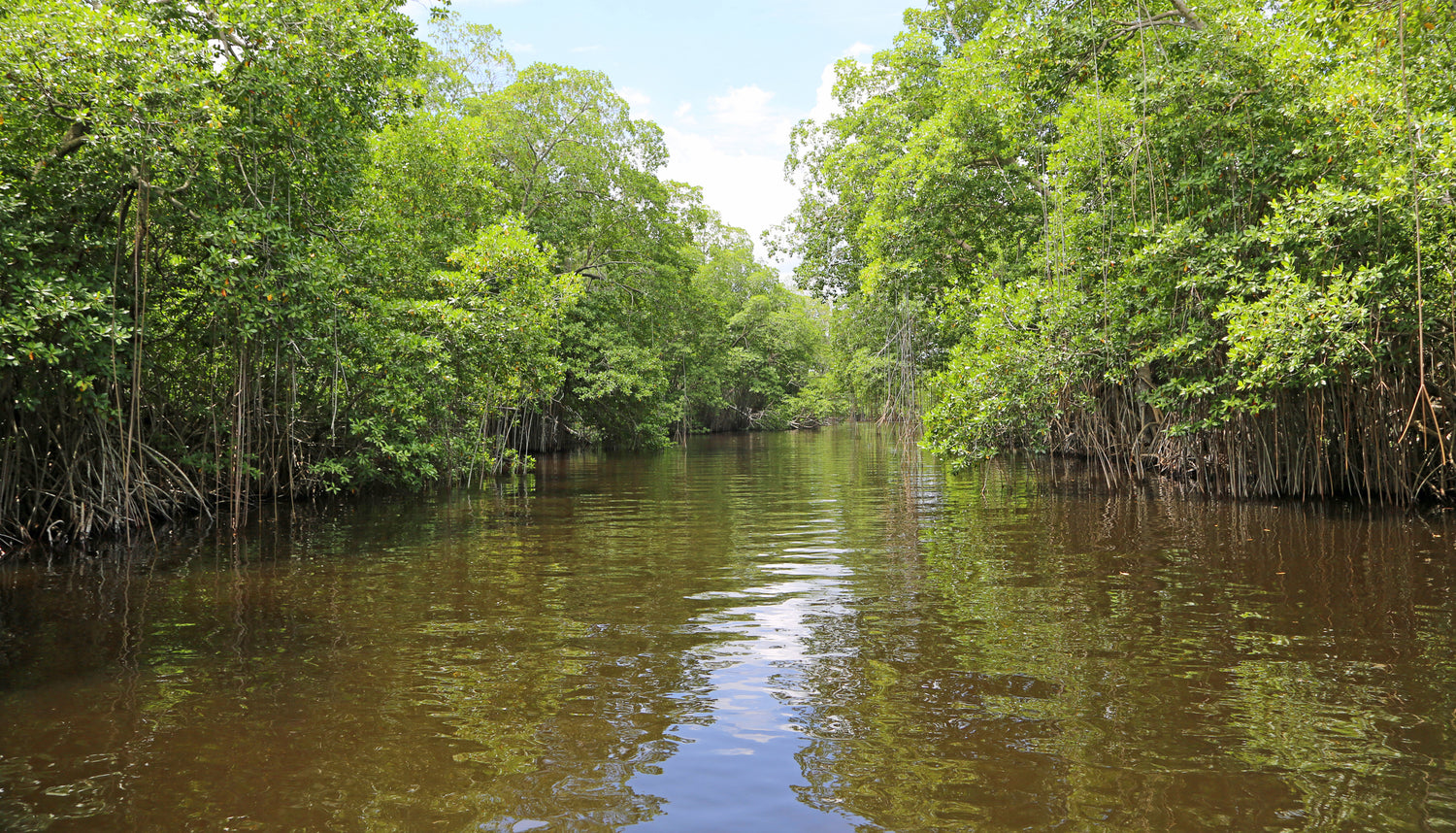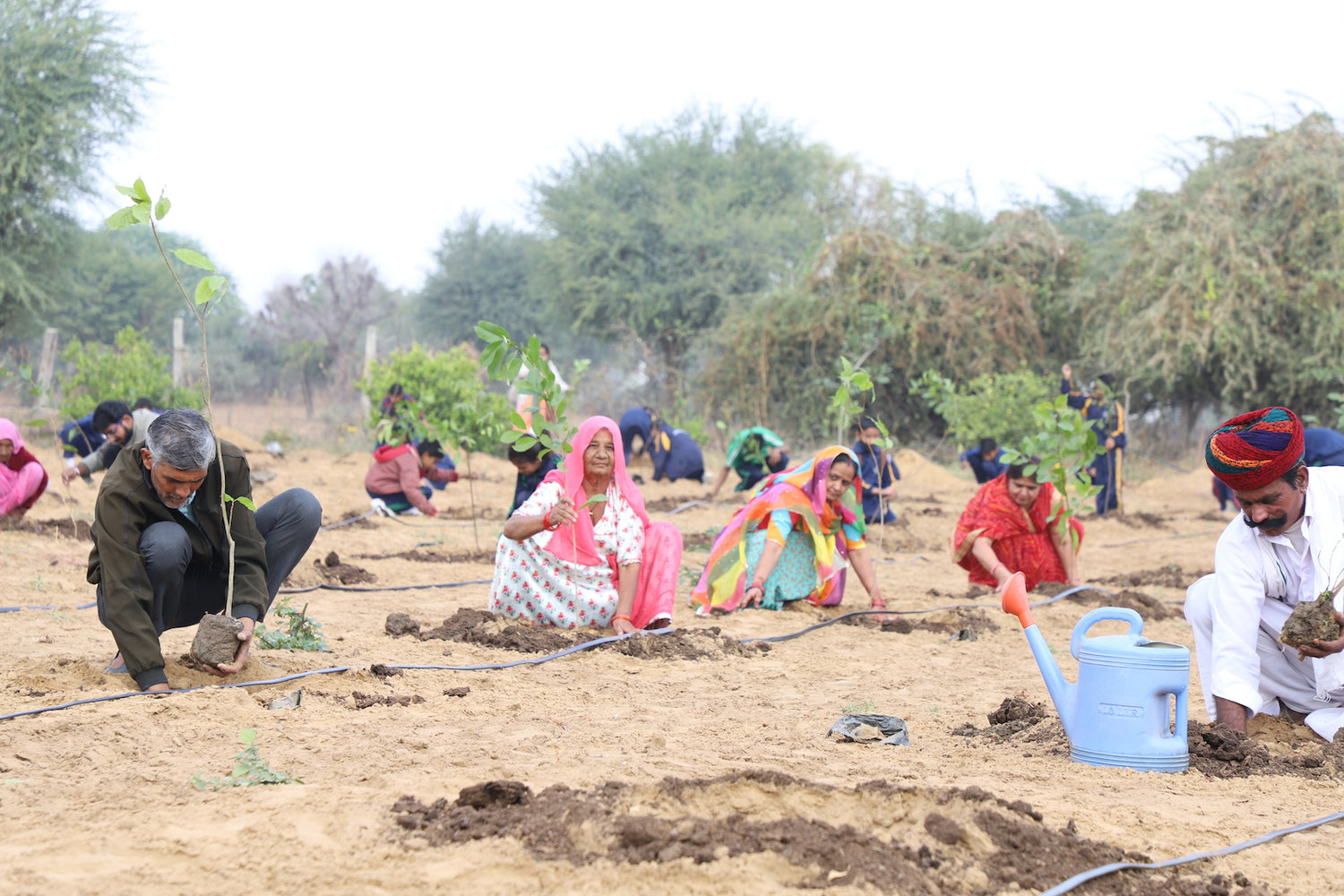Mangroves in Kavaratti: Lakshadweep’s Unique Coastal Forests
The Lakshadweep Islands, known for their pristine waters and coral atolls, are home to unique and vital mangrove ecosystems, particularly on the islan Read more
Connect with us
-
👥 Corporates
If you are looking for:
- 🌲 Tree Plantation Events
- 📊 CSR Projects
📧 corporate@growbilliontrees.com
📞 +91 9699723523
💬 +91 9325931304 WhatsApp (Only)
🕒 Mon - Sat | 10am - 7pm IST
-
🧩 Tree Plantation NGOs
If you are looking for:
- 💰 Financial Assistance
- 🤝 Operational Support
📧 support@growbilliontrees.com
📞 +91 9699723523
💬 +91 9325931304 WhatsApp (Only)
🕒 Mon - Sat | 10am - 7pm IST
-
🌼 Individuals
If you are looking for:
- 👥 Group Tree Plantation Drive
- 🌳 Bulk Tree Plantation
📞 +91 9699723523
💬 +91 9325931304 WhatsApp (Only)
🕒 Mon - Sat | 10am - 7pm IST
Trending
Trees for Corporates
Mangroves in Kavaratti: Lakshadweep’s Unique Coastal Forests
The Lakshadweep Islands, known for their pristine waters and coral atolls, are home to unique and vital mangrove ecosystems, particularly on the island of Kavaratti.
These mangroves, though not as vast as those in mainland India, play a crucial role in sustaining the islands' fragile ecosystems.
They act as natural shields against erosion, sustain marine biodiversity, and support the livelihoods of local communities.
As a tropical treasure, Kavaratti’s mangroves contribute significantly to the environmental and economic health of Lakshadweep.
Historical and Cultural Significance
Mangroves in Lakshadweep, including Kavaratti, have historically supported local fishing communities by providing breeding grounds for fish and crustaceans.
Traditional practices often revolved around sustainable harvesting of mangrove wood for construction and firewood.
Over centuries, the indigenous people of Lakshadweep learned to coexist with these ecosystems, utilizing their resources without causing harm. Today, mangroves continue to be celebrated as an integral part of Kavaratti’s natural heritage.
Ecological Importance
1. Shields Against Coastal Erosion
Kavaratti’s mangroves act as natural buffers, protecting the island from erosion caused by tides and waves. Their dense root systems stabilize the soil and reduce the impact of strong winds and currents.
2. Biodiversity Hotspots
These mangroves are home to a variety of species, including mudskippers, mangrove crabs, and migratory birds like herons and sandpipers. They also serve as nurseries for fish and prawns, supporting the island’s vibrant marine life.
3. Carbon Sequestration
Mangroves in Kavaratti are effective carbon sinks, trapping carbon dioxide and storing it within their biomass and soil. This helps in mitigating climate change, making them crucial for global carbon management.
4. Water Filtration
Mangroves improve water quality by trapping sediments and pollutants, ensuring healthier waters for coral reefs and marine ecosystems surrounding the island.
5. Livelihood Support
For centuries, mangroves have provided resources for fishing, honey collection, and other sustainable livelihoods, directly benefiting the local population.
Fun Facts About Kavaratti’s Mangroves
- Mangrove Pioneers: Species like Rhizophora mucronata and Avicennia marina dominate Kavaratti’s mangroves, showcasing incredible saltwater tolerance.
- Marine Nursery: These mangroves are nurseries for clownfish, groupers, and other coral-dependent species.
- Tiny Giants: Despite their relatively small area, Kavaratti’s mangroves punch above their weight in ecological importance, offering services critical to island survival.
Environmental Challenges
-
Rising Sea Levels As global temperatures rise, Lakshadweep faces the threat of submersion. Mangroves in Kavaratti are at risk from increased salinity and waterlogging, affecting their growth and regeneration.
-
Pollution Marine debris, plastic waste, and agricultural runoff degrade mangrove health, impacting their ability to support marine biodiversity.
-
Urbanization Unregulated development on the islands has encroached upon mangrove habitats, leading to habitat fragmentation and biodiversity loss.
-
Climate Change Changes in weather patterns and rising sea temperatures threaten the delicate balance of Lakshadweep’s mangrove ecosystems.
Grow Billion Trees: Conserving Kavaratti’s Mangroves
Grow Billion Trees plays a leading role in the conservation and restoration of mangroves in Kavaratti and across Lakshadweep.
By integrating technology, community participation, and sustainable practices, the organization ensures the protection and longevity of these critical ecosystems.
Collaborations
- Partnering with the Lakshadweep Forest Department and local NGOs to restore degraded mangrove areas.
- Collaborating with research institutions to study the ecological and economic benefits of mangroves on the islands.
Execution Strategies
- Establishing nurseries for native mangrove species like Sonneratia alba and Bruguiera gymnorrhiza.
- Conducting plantation drives in areas affected by erosion and human activity.
- Using drones and satellite mapping to monitor mangrove health and measure restoration success.
Awareness and Advocacy
- Hosting educational programs in schools and coastal villages to highlight the importance of mangroves.
- Promoting eco-tourism activities like guided mangrove walks and bird-watching expeditions.
- Running digital campaigns to showcase the role of mangroves in combating climate change and supporting biodiversity.
Key Achievements by Grow Billion Trees
- Post-Cyclone Restoration: After Cyclone Ockhi, Grow Billion Trees restored over 50 hectares of mangroves in vulnerable areas of Kavaratti, creating a resilient coastal buffer.
- Community Involvement: Local women’s groups have been trained to cultivate mangrove saplings, fostering economic empowerment alongside conservation.
- Eco-Tourism Development: Mangrove tours and educational programs have increased awareness, attracting tourists and generating funds for conservation efforts.
Future Prospects
By 2030, Kavaratti’s mangroves can serve as a model for small-scale, sustainable mangrove management.
Expanding mangrove coverage, enhancing biodiversity, and fostering eco-tourism will ensure their long-term survival. Strengthened policies and public-private partnerships will play crucial roles in achieving these goals.
Conclusion
Kavaratti’s mangroves are not just ecological assets but lifelines for the Lakshadweep Islands.
They protect against natural disasters, sustain marine biodiversity, and support local communities, proving their immense value for environmental stability and economic well-being.
Grow Billion Trees is at the forefront of mangrove conservation, using innovative strategies and community-driven initiatives to safeguard these coastal treasures.
With collective efforts, Kavaratti’s mangroves will continue to thrive as a testament to the resilience of nature and the importance of sustainable development.
Kavaratti Mangroves and Coastal Protection
These mangroves act as natural shields, protecting Kavaratti’s shores from erosion and tidal surges while keeping the island intact.
Biodiversity in Kavaratti’s Mangroves
From mudskippers and fiddler crabs to migratory birds like herons, these mangroves are buzzing with life, showcasing nature’s finest.
Mangroves and Carbon Storage in Lakshadweep
Kavaratti’s mangroves trap carbon at impressive rates, silently battling climate change and earning their title as nature’s climate warriors.
Threats to Kavaratti’s Mangroves
Rising sea levels, urbanization, and pollution are eating away at these ecosystems, highlighting the urgent need for conservation.
Grow Billion Trees in Kavaratti
This initiative restores mangroves on the island, engaging communities and leveraging technology to ensure these coastal forests thrive.
Mangroves and Fisheries in Lakshadweep
Acting as nurseries for fish and prawns, these mangroves sustain Kavaratti’s seafood economy and support marine biodiversity.
Mangroves and Eco-Tourism in Kavaratti
Offering serene walks and bird-watching tours, these mangroves attract eco-tourists while promoting conservation awareness.
Mangroves and Water Quality in Kavaratti
These mangroves filter pollutants and sediments, ensuring cleaner waters for coral reefs and marine life around the island.
Mangroves and Climate Resilience in Lakshadweep
Adapted to rising sea levels and saltwater, Kavaratti’s mangroves stand tall as the island’s first line of defense against climate impacts.
Community Role in Mangrove Conservation
Local communities in Kavaratti play a key role in protecting these ecosystems, working alongside Grow Billion Trees for sustainable conservation.
Avian Life in Kavaratti’s Mangroves
These mangroves attract migratory birds like sandpipers and egrets, turning the island into a bird-watcher’s paradise.
Unique Mangrove Species in Lakshadweep
Kavaratti’s mangroves feature salt-tolerant species like Rhizophora and Sonneratia, showcasing the resilience of nature in challenging environments.
You may like
Corporate Plantations
FAQ
What are the mangroves in Kavaratti?
These mangroves are Lakshadweep’s green guardians, protecting the coast, supporting marine life, and battling climate change. Grow Billion Trees actively restores and conserves these ecosystems.
Why are Kavaratti’s mangroves important?
They combat erosion, sustain fisheries, and store carbon while hosting diverse wildlife. Grow Billion Trees ensures these vital ecosystems thrive through focused restoration efforts.
How do mangroves protect Kavaratti from erosion?
Mangroves stabilize the soil with their dense roots, acting as natural barriers against tidal surges and erosion. Grow Billion Trees enhances this protection with reforestation projects.
What wildlife thrives in Kavaratti’s mangroves?
From mudskippers to migratory birds and mangrove crabs, these mangroves are brimming with life. Grow Billion Trees works to preserve their habitats for biodiversity.
How do mangroves support fisheries in Kavaratti?
Acting as nurseries for fish, prawns, and crabs, these mangroves fuel Lakshadweep’s seafood industry. Grow Billion Trees restores degraded areas to sustain this balance.
What threats do Kavaratti’s mangroves face?
Rising sea levels, pollution, and urbanization threaten these ecosystems. Grow Billion Trees addresses these issues with sustainable conservation and community-driven projects.
What is Grow Billion Trees doing for Kavaratti’s mangroves?
We plant mangroves, partner with communities, and use technology to monitor and restore these coastal forests for long-term sustainability.
How do mangroves combat climate change in Kavaratti?
Mangroves store carbon efficiently and act as buffers against rising sea levels, making them essential climate warriors. Grow Billion Trees scales up restoration to maximize these benefits.
Why are mudskippers significant in Kavaratti’s mangroves?
Mudskippers thrive in these ecosystems, showcasing their health and ecological balance. Grow Billion Trees ensures their habitats remain intact and flourishing.
How do mangroves benefit eco-tourism in Kavaratti?
Activities like guided walks and bird-watching attract eco-tourists while raising awareness. Grow Billion Trees supports sustainable tourism to protect these ecosystems.
What makes Kavaratti’s mangroves crucial for water quality?
These mangroves filter pollutants and trap sediments, ensuring cleaner waters for coral reefs and marine life. Grow Billion Trees highlights their role in maintaining healthy ecosystems.
Can communities help conserve Kavaratti’s mangroves?
Absolutely! Local communities are essential for protecting these ecosystems. Grow Billion Trees empowers them with training and resources for sustainable conservation practices.























